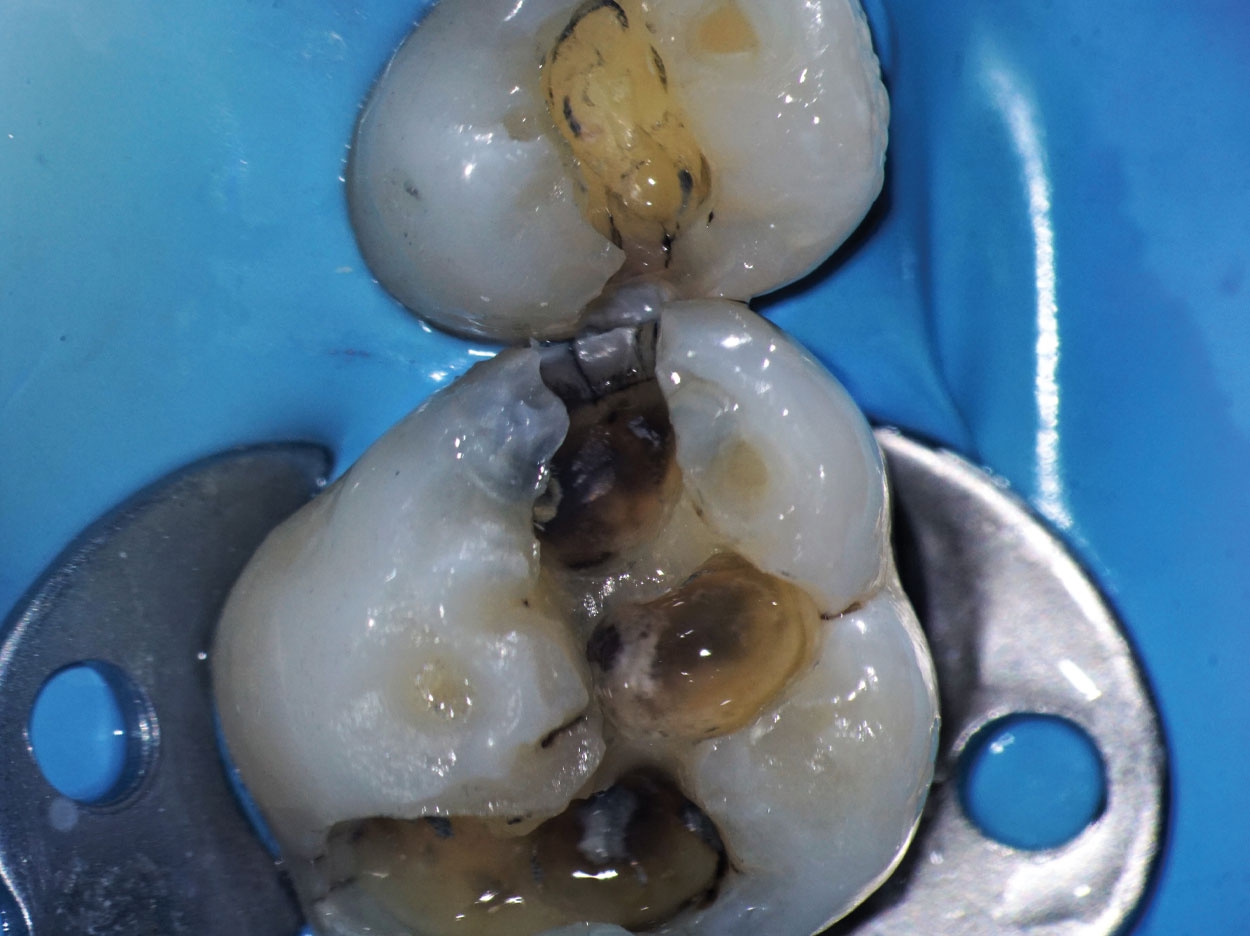
Universal adhesives and universal one-shade composite resins are new trends in dentistry today. Dinesh Sinha, BDS, PhD, interviews Jorge Zapata, DDS, a full-time private practice dentist, about placing direct composites using simplified one-shade composites.
Q: What’s your overall perspective in performing direct composite restorations?
A: Direct composites allow us to minimally prepare and easily restore tooth structure for long-lasting restorations. I have great experience with direct composites, as they are more affordable for patients and easy to repair when necessary.
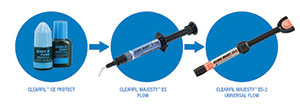 |
| Figure 1. Workflow for posterior composite restorations. |
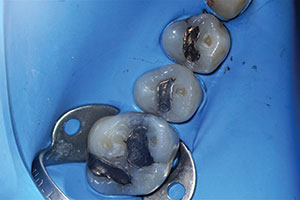 |
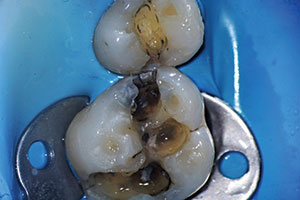 |
| Figure 2. Preoperative image before replacing leaking amalgam restorations. | Figure 3. Removing amalgam and preparing for composite restoration. |
Q: What are the most important factors you consider when placing direct composites?
A: Adhesive strategy is very important. I use a 2-step, self-etch adhesive called CLEARFIL SE Protect (Kuraray Noritake) with selective enamel etching. The handling of composite material is very critical to me since most of my daily direct composites are posteriors. I need to place them accurately and easily. I don’t like to use materials that stick too much to instruments. The polishability and polish retention of the material is important to maintain a smooth surface over time. Physical properties, such as the wear of both the material and the antagonist enamel, are also important factors to consider when providing functionally stable restorations.
Q: What’s your opinion on recent universal adhesives?
A: I have used CLEARFIL Universal Adhesive (Kuraray Noritake) in some of my cases. It works great, saves time, and produces great results. Due to its antibacterial cavity-cleansing effect, CLEARFIL SE Protect is my first choice of adhesive for most cases. My everyday workflow for large posterior composites is shown in Figure 1. In anterior, Class V restorations and small posterior restorations, I just use MAJESTY ES Flow composite (Kuraray Noritake).
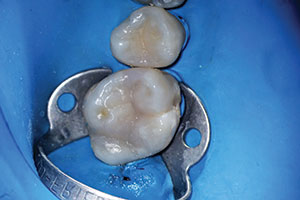 |
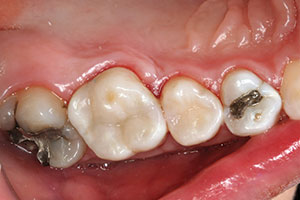 |
| Figures 4 and 5. Immediate postoperative images after the CLEARFIL MAJESTY ES-2 Universal (Kuraray Noritake) restoration. |
Q: What’s your opinion on recent one-shade composites?
A: Most manufacturers have advanced their technology to reduce the number of shades offered. I started using CLEARFIL MAJESTY ES-2 Universal (Kuraray Noritake) for several reasons. I use a flowable composite generally as a liner in my posterior cases. If the tooth is discolored, I use a darker dentin shade. When replacing amalgam restorations (Figure 2), we often see that the remaining tooth structure is severely stained (Figure 3). For this type of case, using a darker shade of flowable resin or CLEARFIL MAJESTY ES-2 Premium (Kuraray Noritake) in a dentin shade will easily mask the dentin color and recreate the natural tooth appearance. Then I use CLEARFIL MAJESTY ES-2 Universal as a single-shade composite since shade matching is not necessary. It perfectly matches the color of the surrounding tooth structure (Figure 4) and restores teeth to meet highly aesthetic demands.
CLEARFIL MAJESTY ES-2 Universal eliminates the need for a blocker shade. It easily streamlines my current procedure of placing composite, saving both the patient and dentist time.
For more information, call Kuraray America at (800) 879-1616 or visit the website kuraraydental.com.
Dr. Zapata is an internationally recognized lecturer and private practitioner at Gentle Family Dentistry in Ogden, Utah.












